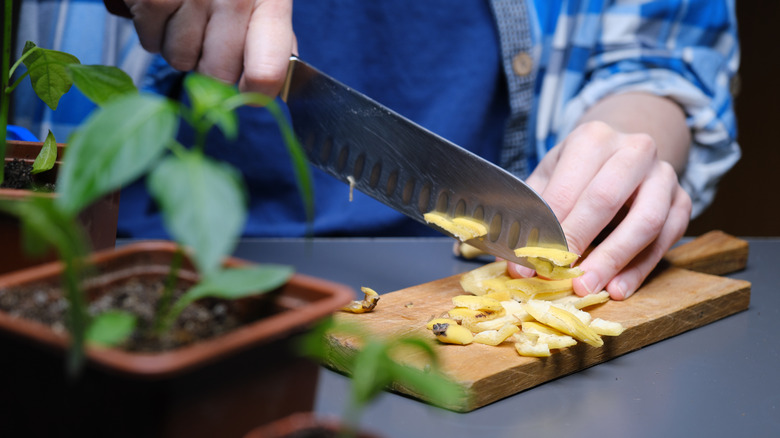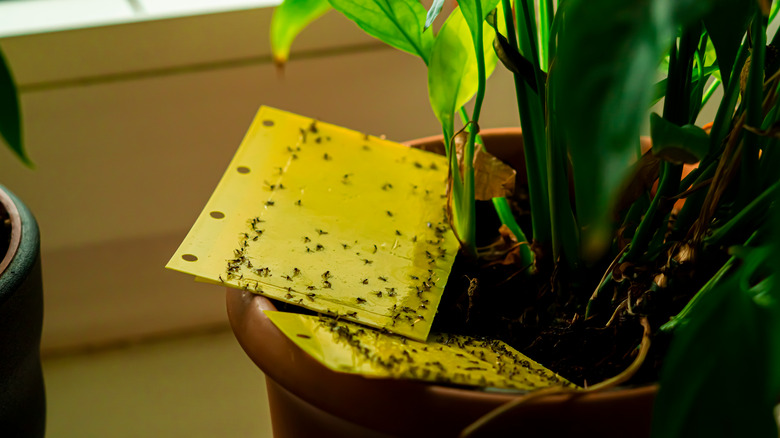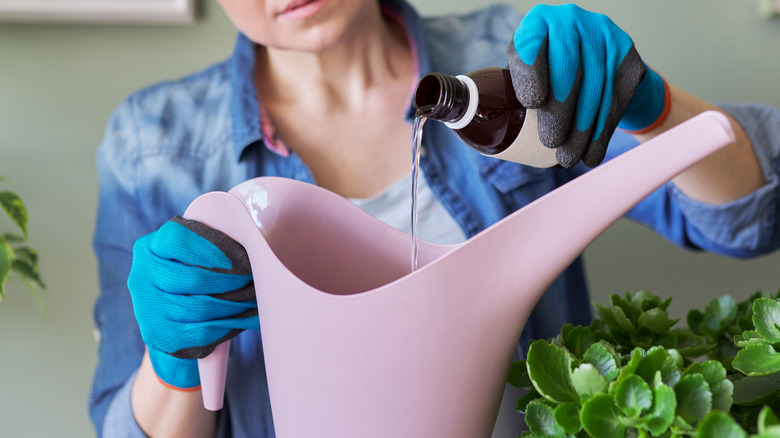The Major Drawback To Using Banana Peels As Fertilizer For Your House Plants
While bananas may not be everyone's cup of tea, the average American consumes a whopping 27 pounds every year, or roughly 90 bananas. These simple and versatile fruits are easy to grow, can be stored at room temperature, and can be eaten raw or worked into a wide variety of recipes, so it makes sense that we love our bananas! Even the peels can be beneficial when recycled back into the environment. For a long time, bananas have been used as a natural fertilizer. It's true that the peels contain some nutrients that plants love, but extracting them isn't as simple as tossing the peels into a pot. In fact, banana peels are likely to cause more harm than good for houseplants because they can attract pests and breed bad bacteria.
But if banana peels aren't good for houseplants, why do so many people suggest using them as fertilizer? How can you still get the most out of repurposing banana peels, and are there any other natural fertilizers that are safe and effective? Here's what you need to know before you go bananas on your houseplants.
Pests and bacteria like bananas too
Banana peels contain some beneficial elements for plants, including potassium, calcium, magnesium, phosphorus, and sulfur. However, nutrients in the peel won't always transfer into the soil and become usable for plants, especially if it's been chopped or tossed in whole. Putting raw banana peel in your houseplant's potting soil isn't a good idea because it breaks down very slowly. This slow decomposition tends to be okay outside, but indoors it can attract pests like flies, fungus gnats, and even ants or roaches. The decomposing banana peel may also emit a foul odor, and its high sugar content will almost certainly throw off the bacterial balance in your plant's soil.
Another factor that many people fail to consider is how the bananas themselves were grown. Conventional bananas can be sprayed with a wide range of pesticides. While the inner fruit is safe to eat, lingering pesticides on the peel could have a negative impact on your houseplants. Even if you only eat organic bananas, not all plants like to be fertilized with banana peels, and houseplants can be especially picky. Pothos, snake plants, monsteras, air plants, and orchids are some of the special few who could benefit from a little diluted banana water on occasion.
How to safely give your houseplants a boost
Banana water is one way to avoid the issue of attracting pests and bacteria. To make banana water, all you have to do is chop organic banana peels, seal them in a container with plain water, and soak them for about three days. Then, strain out the chunks and dilute the solution before using it on your plants. However, even banana water contains sugars that can attract pests and feed bad bacteria, so if you really want to recycle your banana peels into something good, throw them into a compost bin or pile, then use the compost in your garden.
There's no need to risk a pest infestation when there are plenty of other ways to fertilize your houseplants. Eggshells, coffee grounds, and water from steamed vegetables also contain vital nutrients that will help your houseplants thrive without attracting pests. Even human hair can be used as an effective fertilizer! If all else fails, you can get much more reliable results from using an organic commercial fertilizer that's made for indoor houseplants.


